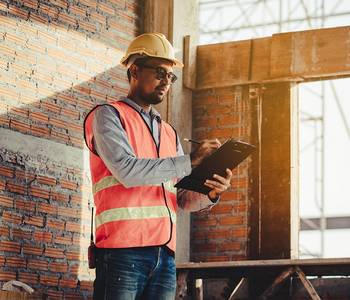
Construction Site Safety Guidelines

Construction zones are among the most dangerous workplaces. Every year, there are numerous reports of severe injuries and fatalities in the construction industry. Unfortunately, many of these incidents occur because workers fail to abide by the safety guidelines for a construction site. When the general safety rules aren’t clearly defined, construction workers tend to take risky actions and behaviours.
As the employer, you are responsible for the health and safety of your employees in a construction zone. That’s why you need to ensure a safe work environment before any construction project commences. Your plan should consist of construction safety training for the workers, among other important protocols.
The best way to approach construction safety is to adopt a preventive culture. Below are construction guidelines that include general safety rules, health guidelines, and key activities:
Construction safety training

One of the first steps to take is to review employee training records, which will be required to ensure employees are signed up for appropriate safety training. The curriculum should include learning about safety inspections and different types of hazards, among other security protocols for construction sites.
A great way to complete this training is through a site safety orientation, and/or daily job hazard analysis. Construction workers working at heights are required to complete working at heights training in Ontario.
Led by qualified industry professionals, the safety training programs teach your workers about the best practices in a construction site. They will learn to identify hazards, avoid dangerous situations, and understand how to mitigate risks. Upon completing the program, your workforce will become more knowledgeable and confident about construction zone safety.
Construction safety clothing

What you wear to a construction site is important for your health and safety. Wearing the wrong clothes, headwear, or footwear could increase your chance of injuries. As a rule, each construction worker should hard hats, steel-toed safety boots, reflective safety vests, and gloves where required. These types of clothing and gear are designed to maximize the worker’s safety in a construction zone.
Eye protection
In addition, construction workers need to protect their eyes from dirt, dust, and sharp objects. Equip your staff with appropriate eyewear that protects them from the risk of injuries to their eyes. Safety goggles are essential, especially where airborne substances and chemicals are a risk. For employees working under the hot sun, wear glasses with UV protection.
Ear protection
Equip your construction team with hearing protection. Construction activities can involve constant exposure to high decibel sounds, which leads to hearing loss and ear damage over time. The two main types of ear protection are over-the-head earmuffs and earplugs. Make sure each worker is supplied with the ear protection equipment while at the construction site.
Respiratory protection
The air quality in a construction zone can affect your employees’ health, especially after prolonged exposure. Airborne pollutants may be present on building construction sites, so equip affected workers with appropriate, individual respiratory equipment. Generally, disposable respiratory equipment is more hygienic, comfortable, and practical for users. However, reusable equipment may also be more cost-effective in certain situations.
Construction site safety equipment list

A construction site involves lots of specialized equipment to perform designated tasks. For each piece of construction equipment, follow a regular maintenance schedule specified by the manufacturer to ensure the equipment is safe to use and complete a daily pre-use inspection. For motorized equipment with intricate moving parts, draft a short checklist of every component that needs inspection.
Make sure you also inspect smaller equipment like trolleys, ladders, and handheld tools to ensure they operate safely. If any equipment is damaged and / or in need or servicing or maintenance, it should be removed until repaired, replaced and / or serviced by a qualified technician.
In addition, the following list of safety equipment may be required on your construction site:
Fall protection equipment
Falling from heights is a common accident in construction sites and can cause serious injuries. Unprotected construction workers may fall from ladders, rooftops, or moving platforms. To guard your workers, implement a variety of passive fall protection equipment that range from guardrails to safety netting. Ensure that you have a documented fall protection plan that has been reviewed by employees on the site.
Barricades
Barricades are a popular form of hazard identification on construction sites. You can limit access by setting up barricades to block off specific sections of the construction site, where hazards exist. This can be critical where potentially dangerous equipment is in use. Consider adding LED lights or reflectors to ensure visibility if working outdoors.
Alarms
In an emergency, effective communication is critical. An alarm is the best form of communication to alert everyone on a construction site. Educate the workers on what to do if the alarm sounds. While an alarm system will not prevent accidents, it could avert further injury and damage. During the construction phase, an air-horn can be a great way to notify workers of an emergency.
Construction site warning signs

As simple as they are, signages are efficient ways to prevent workplace accidents. These signs and posters serve as a friendly reminder about the different types of construction site hazards. Place the warning signs across the construction site, especially in areas where hazards are present.
The trick here is to keep the signs as visually simple as possible. Make the contents easy to understand, using basic iconography and WHMIS safety symbols for quick comprehension. Also, include clear information about the appropriate actions to take if an accident occurs.
First aid kit

Every workplace is required have a first aid kit on standby. The first aid kit consists of essential medical supplies that can treat injuries quickly. Remember to restock whenever supplies are low, keeping enough first aid materials for multiple incidents. You don’t want to be caught with an empty first aid kit when any injuries occur. At a minimum, inspect your first aid kit quarterly.
Make sure you put the first aid kit at a convenient and easily accessible location. Ideally, place the first aid supplies at eye level so that it’s easy to spot in case of emergency. In addition, there must be a trained individual for standard first aid and CPR available at all times in the charge of the first aid kit. The training program teaches about the various types of first aid supplies and how to use them properly.

